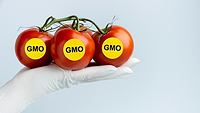BIZTRACKS
CAST, IFT Publish Traceability Issue Paper to Help Industry Improve Food Safety

Image credit: Tumisu via Pixabay
The Council for Agricultural Science and Technology (CAST) and the Institute of Food Technologists (IFT) recently released an issue paper that examines traceability fundamentals, including the development and use of various technologies to enhance food safety, source transparency, and consumer confidence. With increasing interest in food traceability around the globe and a focus on complying with the U.S. Food and Drug Administration’s (FDA's) Food Traceability Final Rule, the issue paper is intended as a foundational resource for stakeholders across industry, academia, government agencies, and trade associations.
The issue paper explores the technological infrastructure underlying food traceability platforms while touching on the history of those platforms, the current state of technology, ongoing U.S. food traceability initiatives, and the future of commercial scale deployment.
Robert Gravani, Ph.D., Professor Emeritus at Cornell University and former Board President of IFT, served as Task Force Chair for the publication. Dr. Gravani discussed the issue paper and its impact on the food supply chain during in-person presentations on Thursday, September 28, in Washington, D.C., that were open to the public. Those who could not attend in-person are invited to attend a webinar on Thursday, October 5, from 12:00 P.M.–1:00 P.M. CDT.
Insights from the Issue Paper
According to the issue paper, food traceability describes a system that documents the history of a product through its entire production chain from primary raw materials to the final consumable products. A food traceability system needs to be:
- Fit-for-purpose, user friendly, globally accepted, and feasibly incorporated into current industry practices and systems
- Compatible with the components of other food safety and quality management systems.
The fundamental pillars of traceability—who, what, when, and where—must be unambiguously communicated through the supply chain.
- Key terms, like critical tracking events (CTE) and key data elements (KDE), provide the framework and foundation for an interoperable system that needs to be successfully applied by all partners in the supply chain to assure success
- CTEs are supply chain events where data capture is necessary to achieve traceability, which are usually points of transfer or transformation like shipping, receiving, or processing
- KDEs are the pieces of information or attributes that describe the events, the products, and the players involved at each CTE.
Global regulatory agencies have established traceability requirements to ensure the safety, security and legality of both domestically produced and imported products.
- The widespread practice of “one step forward, one step back” traceability is reflected in food regulations throughout the U.S., the EU, and Canada.
- FDA’s Food Traceability Final Rule pushes industry towards an “end-to-end” traceability approach with a defined set of baseline traceability requirements for certain commodities.
Traceability systems rely on good data, from trusted sources.
- The effectiveness of a traceability system directly correlates with the quality of the data collected
- Comprehensive investment in system design and maintenance efforts (e.g., staff training, technology, standardization) is essential for cultivating quality data
- Emerging tools and technologies like decentralized identifiers (DIDs) and verifiable credentials offer promising opportunities to improve trust in digital data.
The ability to track and trace food depends upon systems that enable people to share information quickly and efficiently up and down the supply chain without fraud or errors.
- Collaborative efforts to standardize what data is collected, how data is formatted, and/or how data is exchanged enable easier and more efficient traceability systems
- The FDA’s Food Traceability Final Rule standardizes data collection requirements for those that manufacture, process, pack, or hold food that are on the food traceability list
- The GS1 Digital Link is a new standard that enables simplified sharing of GS1 standard identifiers using the broadly adopted QR barcode format.
Looking for a reprint of this article?
From high-res PDFs to custom plaques, order your copy today!







